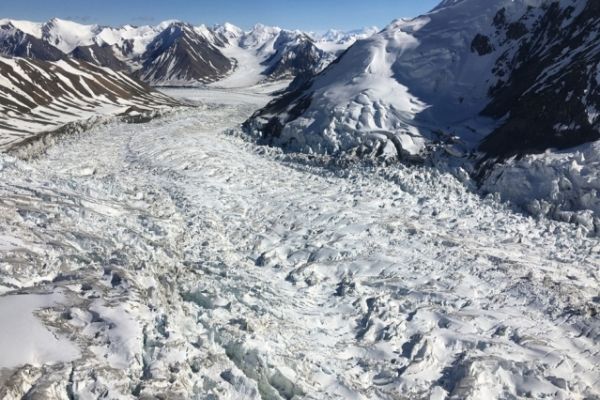About 10 percent of the Earth’s land mass is covered in glaciers, most of which slip slowly across the land over years, carving fjords and trailing rivers in their wake. But about 1 percent of glaciers can suddenly surge, spilling over the land at 10 to 100 times their normal speed.
When this happens, a glacial surge can set off avalanches, flood rivers and lakes, and overwhelm downstream settlements. What triggers the surges themselves has been a longstanding question in the field of glaciology.
Now scientists at MIT and Dartmouth College have developed a model that pins down the conditions that would trigger a glacier to surge. Through their model, the researchers find that glacial surge is driven by the conditions of the underlying sediment, and specifically by the tiny grains of sediment that lie beneath a towering glacier.
Continue reading at Massachusetts Institute of Technology
Image via Massachusetts Institute of Technology


